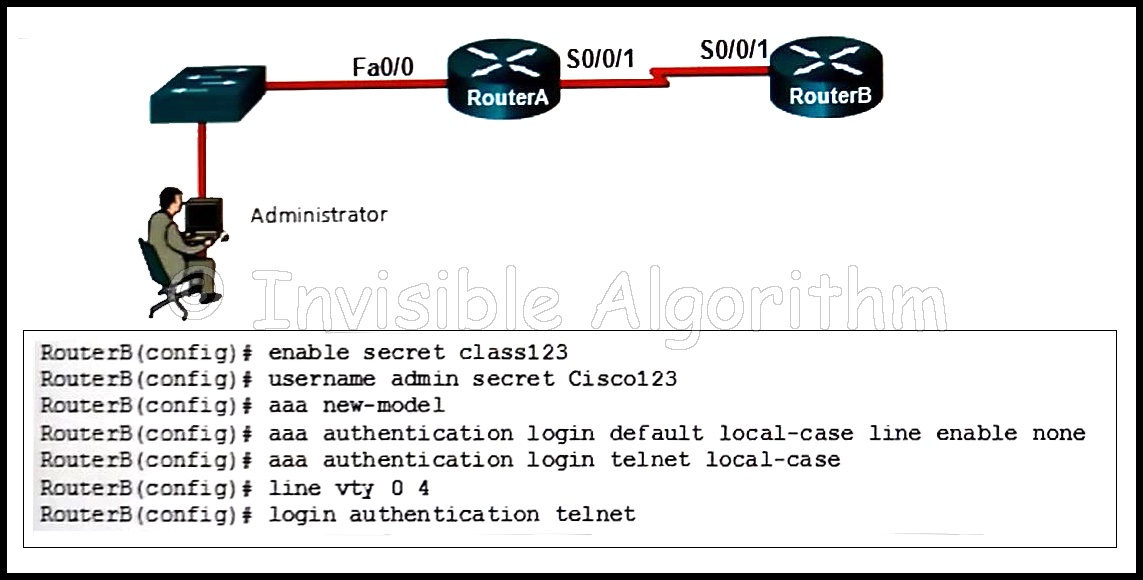Refer to the exhibit. The administrator can ping the S0/0/1 interface of RouterB but is unable to gain Telnet access to the router by using the password cisco123. What is a possible cause of the problem?

- The Telnet connection between RouterA and RouterB is not working correctly.
- The password cisco123 is wrong.
- The administrator does not have enough rights on the PC that is being used.
- The enable password and the Telnet password need to be the same.
Other case:
- AAA authorization is not configured.
- The administrator does not have enough rights on the PC that is being used.
- The administrator has used the wrong password.
- The wrong vty lines are configured.
Explanation: To authenticate and log in using a Telnet vty line, the network administrator is required to use the local username and password that has been configured on the local router. This is evidenced by the application of the aaa authentication login telnet local-case command. The administrator must use a capital C in Cisco123 to match the applied configuration.
Exam with this question: CCNA Security Final Exam Answers
Exam with this question: CCNP ENARSI v8 Certification Practice Exam
Exam with this question: CCNA Security Pretest Exam Answers
Please login or Register to submit your answer
